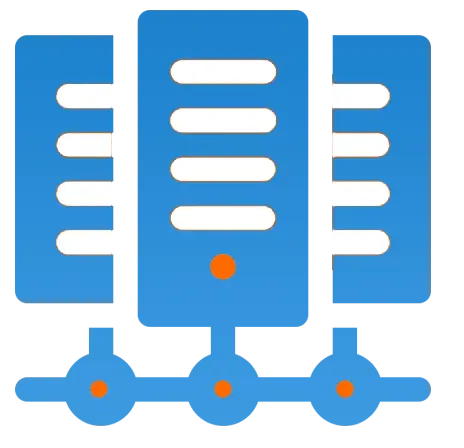Get 69% Off on Cloud Hosting : Claim Your Offer Now!
- Products
-
Compute
Compute
- Predefined TemplatesChoose from a library of predefined templates to deploy virtual machines!
- Custom TemplatesUse Cyfuture Cloud custom templates to create new VMs in a cloud computing environment
- Spot Machines/ Machines on Flex ModelAffordable compute instances suitable for batch jobs and fault-tolerant workloads.
- Shielded ComputingProtect enterprise workloads from threats like remote attacks, privilege escalation, and malicious insiders with Shielded Computing
- GPU CloudGet access to graphics processing units (GPUs) through a Cyfuture cloud infrastructure
- vAppsHost applications and services, or create a test or development environment with Cyfuture Cloud vApps, powered by VMware
- Serverless ComputingNo need to worry about provisioning or managing servers, switch to Serverless Computing with Cyfuture Cloud
- HPCHigh-Performance Computing
- BaremetalBare metal refers to a type of cloud computing service that provides access to dedicated physical servers, rather than virtualized servers.
-
Storage
Storage
- Standard StorageGet access to low-latency access to data and a high level of reliability with Cyfuture Cloud standard storage service
- Nearline StorageStore data at a lower cost without compromising on the level of availability with Nearline
- Coldline StorageStore infrequently used data at low cost with Cyfuture Cloud coldline storage
- Archival StorageStore data in a long-term, durable manner with Cyfuture Cloud archival storage service
-
Database
Database
- MS SQLStore and manage a wide range of applications with Cyfuture Cloud MS SQL
- MariaDBStore and manage data with the cloud with enhanced speed and reliability
- MongoDBNow, store and manage large amounts of data in the cloud with Cyfuture Cloud MongoDB
- Redis CacheStore and retrieve large amounts of data quickly with Cyfuture Cloud Redis Cache
-
Automation
Automation
-
Containers
Containers
- KubernetesNow deploy and manage your applications more efficiently and effectively with the Cyfuture Cloud Kubernetes service
- MicroservicesDesign a cloud application that is multilingual, easily scalable, easy to maintain and deploy, highly available, and minimizes failures using Cyfuture Cloud microservices
-
Operations
Operations
- Real-time Monitoring & Logging ServicesMonitor & track the performance of your applications with real-time monitoring & logging services offered by Cyfuture Cloud
- Infra-maintenance & OptimizationEnsure that your organization is functioning properly with Cyfuture Cloud
- Application Performance ServiceOptimize the performance of your applications over cloud with us
- Database Performance ServiceOptimize the performance of databases over the cloud with us
- Security Managed ServiceProtect your systems and data from security threats with us!
- Back-up As a ServiceStore and manage backups of data in the cloud with Cyfuture Cloud Backup as a Service
- Data Back-up & RestoreStore and manage backups of your data in the cloud with us
- Remote Back-upStore and manage backups in the cloud with remote backup service with Cyfuture Cloud
- Disaster RecoveryStore copies of your data and applications in the cloud and use them to recover in the event of a disaster with the disaster recovery service offered by us
-
Networking
Networking
- Load BalancerEnsure that applications deployed across cloud environments are available, secure, and responsive with an easy, modern approach to load balancing
- Virtual Data CenterNo need to build and maintain a physical data center. It’s time for the virtual data center
- Private LinkPrivate Link is a service offered by Cyfuture Cloud that enables businesses to securely connect their on-premises network to Cyfuture Cloud's network over a private network connection
- Private CircuitGain a high level of security and privacy with private circuits
- VPN GatewaySecurely connect your on-premises network to our network over the internet with VPN Gateway
- CDNGet high availability and performance by distributing the service spatially relative to end users with CDN
-
Media
-
Analytics
Analytics
-
Security
Security
-
Network Firewall
- DNATTranslate destination IP address when connecting from public IP address to a private IP address with DNAT
- SNATWith SNAT, allow traffic from a private network to go to the internet
- WAFProtect your applications from any malicious activity with Cyfuture Cloud WAF service
- DDoSSave your organization from DoSS attacks with Cyfuture Cloud
- IPS/ IDSMonitor and prevent your cloud-based network & infrastructure with IPS/ IDS service by Cyfuture Cloud
- Anti-Virus & Anti-MalwareProtect your cloud-based network & infrastructure with antivirus and antimalware services by Cyfuture Cloud
- Threat EmulationTest the effectiveness of cloud security system with Cyfuture Cloud threat emulation service
- SIEM & SOARMonitor and respond to security threats with SIEM & SOAR services offered by Cyfuture Cloud
- Multi-Factor AuthenticationNow provide an additional layer of security to prevent unauthorized users from accessing your cloud account, even when the password has been stolen!
- SSLSecure data transmission over web browsers with SSL service offered by Cyfuture Cloud
- Threat Detection/ Zero DayThreat detection and zero-day protection are security features that are offered by Cyfuture Cloud as a part of its security offerings
- Vulnerability AssesmentIdentify and analyze vulnerabilities and weaknesses with the Vulnerability Assessment service offered by Cyfuture Cloud
- Penetration TestingIdentify and analyze vulnerabilities and weaknesses with the Penetration Testing service offered by Cyfuture Cloud
- Cloud Key ManagementSecure storage, management, and use of cryptographic keys within a cloud environment with Cloud Key Management
- Cloud Security Posture Management serviceWith Cyfuture Cloud, you get continuous cloud security improvements and adaptations to reduce the chances of successful attacks
- Managed HSMProtect sensitive data and meet regulatory requirements for secure data storage and processing.
- Zero TrustEnsure complete security of network connections and devices over the cloud with Zero Trust Service
- IdentityManage and control access to their network resources and applications for your business with Identity service by Cyfuture Cloud
-
-
Compute
- Solutions
-
Solutions
Solutions
-
 Cloud
Hosting
Cloud
Hosting
-
 VPS
Hosting
VPS
Hosting
-
GPU Cloud
-
 Dedicated
Server
Dedicated
Server
-
 Server
Colocation
Server
Colocation
-
 Backup as a Service
Backup as a Service
-
 CDN
Network
CDN
Network
-
 Window
Cloud Hosting
Window
Cloud Hosting
-
 Linux
Cloud Hosting
Linux
Cloud Hosting
-
Managed Cloud Service
-
Storage as a Service
-
 VMware
Public Cloud
VMware
Public Cloud
-
 Multi-Cloud
Hosting
Multi-Cloud
Hosting
-
 Cloud
Server Hosting
Cloud
Server Hosting
-
 Bare
Metal Server
Bare
Metal Server
-
 Virtual
Machine
Virtual
Machine
-
 Magento
Hosting
Magento
Hosting
-
Remote Backup
-
 DevOps
DevOps
-
 Kubernetes
Kubernetes
-
 Cloud
Storage
Cloud
Storage
-
NVMe Hosting
-
 DR
as s Service
DR
as s Service
-
-
Solutions
- Marketplace
- Pricing
- Resources
- Resources
-
By Product
Use Cases
-
By Industry
- Company
-
Company
Company
-
Company
What is an EPP Code?
Table of Contents
In the world of domain management, one term that frequently comes up is “EPP code.” Whether you’re transferring a domain to a new registrar or simply managing your domain settings, understanding what an EPP code is and why it’s essential can save you time and confusion.
This article will break down everything you need to know about EPP codes, how they are used, and how they relate to cloud hosting and servers.
Understanding EPP Code
An EPP code, also known as an Extensible Provisioning Protocol code, is a unique authentication key or password required to transfer a domain name from one registrar to another. The code serves as a security measure, ensuring that the domain owner authorizes the domain transfer process.
When you register a domain, it is typically managed by a domain registrar, such as GoDaddy, Namecheap, or Google Domains. If you wish to switch registrars or move your domain to a different provider, you will need the EPP code to initiate the transfer. The current registrar generates this code, and is usually sent to the domain owner via email or can be accessed through the registrar’s control panel.
Why Do You Need an EPP Code?
The EPP code is essentially a password that proves the legitimacy of your request to transfer a domain. Without it, a domain cannot be transferred to another registrar. This is crucial for preventing unauthorized transfers. If someone were to gain access to your domain account, they could transfer your domain to another provider without your consent, which could result in losing control of your website or email services.
Moreover, the EPP code acts as an added layer of protection against domain hijacking, a serious threat in the digital world. This is especially important when domains are linked to services such as cloud hosting, which stores important data or websites on remote servers.
How to Obtain an EPP Code
Getting an EPP code is a simple process, but the steps vary slightly depending on your domain registrar. In most cases, you will need to:
- Log in to your account: Access your registrar account where the domain is currently registered.
- Navigate to the domain management section: Once logged in, locate the section where your domains are listed.
- Request the EPP code: There should be an option to request or generate the EPP code for your domain. This might be labeled as an “Authorization Code” or simply an “EPP Code.”
- Check your email: Most registrars send the code to the email address associated with your account. In some cases, you may find the code directly in the domain management panel.
If you’re unsure where to find it, many registrars have a dedicated help section on their website or customer support to guide you through the process.
How Does the EPP Code Work?
Once you have the EPP code, you can initiate a domain transfer with your new registrar. The new registrar will request this code to verify that you have the authority to transfer the domain. Once the transfer request is submitted, the old registrar will typically send you an email asking for confirmation. In some cases, you may need to approve the transfer by clicking a confirmation link.
Once the transfer is complete, the domain will be managed by the new registrar. It’s important to note that domain transfers can take anywhere from a few hours to several days to complete, depending on the registrars involved. However, the EPP code ensures that this transfer process is smooth and secure.
EPP Code and Domain Locking
Many registrars offer a “domain locking” feature, which prevents unauthorized domain transfers. When domain locking is enabled, the EPP code can only be used if the lock is removed. This is an important step to prevent malicious transfers. You will need to disable domain locking before you can obtain your EPP code and initiate the transfer.
In addition, some registrars may place a 60-day restriction on transferring a domain after it’s been newly registered or transferred. During this period, you will not be able to obtain an EPP code to transfer your domain. Therefore, it’s always a good idea to check your domain’s status before attempting to initiate a transfer.
Common Issues and Troubleshooting
Even though the process of obtaining and using an EPP code is usually straightforward, some issues can arise. Below are some common problems and how to resolve them:
- EPP Code Not Working: If the EPP code you received doesn’t work, it’s possible that it has expired or was entered incorrectly. Double-check that you’re entering the code exactly as it appears. If the problem persists, contact your current registrar for assistance.
- Domain Locking: If your domain is locked, you’ll need to unlock it before obtaining the EPP code. Look for the domain lock settings in your registrar’s control panel.
- Registrar Delays: Sometimes, registrars may delay sending the EPP code. If this happens, you can reach out to their customer support for assistance. Ensure your email address is up to date, as the code is usually sent via email.
Importance of EPP Codes in Cloud
The role of an EPP code extends beyond just the domain itself. In today’s digital landscape, many businesses use cloud hosting services to store their data, websites, and applications. These services are often linked to specific domain names. Therefore, losing control of your domain could potentially disrupt access to your cloud resources or hosting services.
For example, if your domain is tied to an email system, web application, or server that relies on your domain name, unauthorized transfer of that domain could cause significant downtime or loss of access to those services. This is why it’s essential to protect your domain with an EPP code.
Moreover, cloud hosting and servers often use subdomains or custom domain names. The process of migrating to a different hosting provider may also involve transferring domains, making the EPP code crucial for a smooth transition.
Conclusion
In conclusion, an EPP code is an essential part of managing and transferring your domain. It ensures that only the rightful domain owner can initiate a transfer, protecting your online presence from potential threats. By understanding the process and importance of EPP codes, you can securely manage your domains, whether you’re using cloud hosting or other cloud-based solutions.
If you’re looking for a reliable hosting solution with strong security measures for your domain, consider Cyfuture Cloud. We provide a comprehensive hosting platform with robust features, including secure domain management and excellent customer support, ensuring that your cloud services and domains are in safe hands. Make the right choice for your cloud infrastructure today!
Recent Post

Stay Ahead of the Curve.
Join the Cloud Movement, today!
© Cyfuture, All rights reserved.
Send this to a friend

 Pricing
Calculator
Pricing
Calculator
 Power
Power
 Utilities
Utilities VMware
Private Cloud
VMware
Private Cloud VMware
on AWS
VMware
on AWS VMware
on Azure
VMware
on Azure Service
Level Agreement
Service
Level Agreement 


















